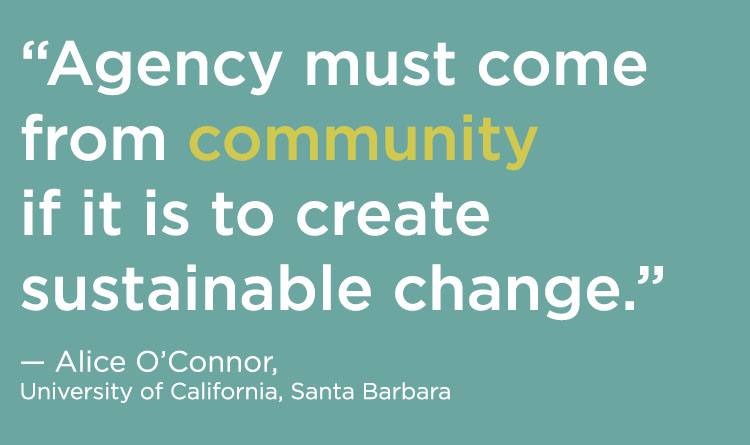From September 14–15, Theaster Gates and Place Lab team members Lori Berko and Carson Poole participated in a series of events in Akron, Ohio, as part of the Akron Roundtable. Now celebrating its 40th year, the mission of the Akron Roundtable is to bring speakers to the city who inform, educate, and stimulate listeners on topics of importance to the region, the country, and the world. In this entry, Place Lab’s project specialist Carson Poole reflects on the conversations had at the September 14th discussion sessions.
On September 14th, the Executive Director of the Akron Art Museum, Mark Masuoka, and President of the Akron Arts Alliance, Barbara Feld, convened two groups of Akronites for discrete discussion sessions facilitated by Theaster Gates. These groups represented a diverse collection of artists, writers, leaders of community based organizations, representatives from anchor institutions, members of the philanthropic community, and other residents of Akron who were working to create change in their city.
The discussions, a prelude to the following day’s Roundtable, touched on challenges that would be familiar to almost anyone in the field: a lack of affordable spaces for artists to practice and engage the community; restrictive and inflexible land use regulations that can delay projects for mixed-use, dense, and walkable development; siloed institutions and disconnected organizations; disparate information; and intense competition for funding. Though the groups met in separate sessions, both agreed that there was plenty of energy and interest in making change, but that these barriers prevented the work from happening at the scale they felt was necessary to drive impact. The groups agreed that communities are all “willing, but not able.”
Scale and impact are issues that I have found come up time and again. Why make investments in the arts, artists, and cultural spaces when resources are limited? How can creative, incremental development compete with transportation, housing, infrastructure, and traditional economic development?
While these investments are all important, the discussion sessions both hit upon the power of arts and culture to do things that other interventions simply cannot. Cultural spaces create generative platforms within communities that propel work forward in previously unforeseen ways. People are provided opportunities to gather and commune, access to one another begins to cross boundaries, and relationships expand. New possibilities can be imagined and realized, and novel economic prospects emerge.
The power of the arts to bring people together for critical conversations was echoed by Akronite and Ethical Redevelopment Salon Member Brent Wesley, who told the group about a community conversation that he and fellow Salon Member Jeremy Lile, of City Hope, held in Akron this summer. Wesley said that he and others felt the need to bring people together to discuss “race in America, how to better understand each other, what certain people go through, how we arrived at this point, and what we need to do as humans.” The Grand Exchange: Understanding the Black and White drew over 150 people. The attendees represented widely different views on social justice and race. The organizers were able to create a space for conversations to occur across race, class, and ideology.
The close of the Akron discussion sessions did not solve issues faced when trying to bring a vision to reality. Questions remain about “how to get there.” How can artists and like-minded small developers break through the challenges and barriers in front of them? One of the most prescient solutions involved a reimagining of the relationships between institutions, artists, developers, and stakeholders in city government that would drive substantive changes in policy and build solid foundations to support sustainable change. New coalitions were imagined that would collapse and blur the divides between artists and developers, funders and practitioners, as well as municipal government and the residents they serve.
Ultimately, the discussions held in Akron drove home a fundamental truth about ethical, people-first transformation efforts: the drive is there, but it demands a wide-range of diverse partnerships and interdisciplinary working groups that can leverage the right mix of resources, knowledge, and power to effect lasting and meaningful change.
You can read more about the September 15th Roundtable discussion, led by guest speaker Theaster Gates, here.









